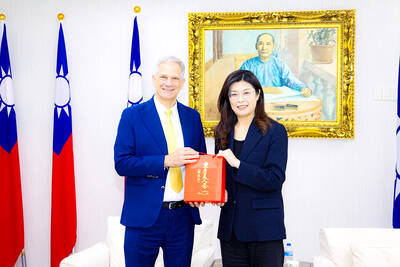Can machines think? That was the question posed by the great mathematician Alan Turing. Half a century later six computers are about to converse with human interrogators in an experiment that will attempt to prove that the answer is yes.
In the “Turing test” a machine seeks to fool judges into believing that it could be human. The test is performed by conducting a text-based conversation on any subject. If the computer’s responses are indistinguishable from those of a human, it has passed the Turing test and can be said to be “thinking.”
No machine has yet passed the test devised by Turing, the British genius who helped to crack German military codes during World War II. But at 9am this coming Sunday, six computer programs — “artificial conversational entities” — will answer questions posed by human volunteers at the University of Reading, England, in a bid to become the first recognized “thinking” machine. If any program succeeds, it is likely to be hailed as the most significant breakthrough in artificial intelligence since the IBM supercomputer Deep Blue beat world chess champion Garry Kasparov in 1997. It could also raise profound questions about whether a computer has the potential to be “conscious” — and if humans should have the “right” to switch it off.
Professor Kevin Warwick, a cyberneticist at the university, said: “I would say now that machines are conscious, but in a machine-like way, just as you see a bat or a rat is conscious like a bat or rat, which is different from a human. I think the reason Alan Turing set this game up was that maybe to him consciousness was not that important; it’s more the appearance of it, and this test is an important aspect of appearance.”
The six computer programs taking part in the test are called Alice, Brother Jerome, Elbot, Eugene Goostman, Jabberwacky and Ultra Hal. Their designers will be competing for an 18-carat gold medal and US$100,000 offered by the Loebner Prize in Artificial Intelligence.
The test will be carried out by human “interrogators,” each sitting at a computer with a split screen: one half will be operated by an unseen human, the other by a program. The interrogators will then begin separate, simultaneous text-based conversations with both of them on any subjects they choose. After five minutes they will be asked to judge which is which. If they get it wrong, or are not sure, the program will have fooled them. According to Warwick, a program needs only to make 30 percent or more of the interrogators unsure of its identity to be deemed as having passed the test, based on Turing’s own criteria.
Warwick said: “You can be flippant, you can flirt, it can be on anything. I’m sure there will be philosophers who say, ‘OK, it’s passed the test, but it doesn’t understand what it’s doing.’”
One such philosopher is Professor A.C. Grayling of Birkbeck College, University of London. “The test is misguided. Everyone thinks it’s you pitting yourself against a computer and a human, but it’s you pitting yourself against a computer and computer programmer. AI is an exciting subject, but the Turing test is pretty crude.”

Seven hundred job applications. One interview. Marco Mascaro arrived in Taiwan last year with a PhD in engineering physics and years of experience at a European research center. He thought his Gold Card would guarantee him a foothold in Taiwan’s job market. “It’s marketed as if Taiwan really needs you,” the 33-year-old Italian says. “The reality is that companies here don’t really need us.” The Employment Gold Card was designed to fix Taiwan’s labor shortage by offering foreign professionals a combined resident visa and open work permit valid for three years. But for many, like Mascaro, the welcome mat ends at the door. A

If China attacks, will Taiwanese be willing to fight? Analysts of certain types obsess over questions like this, especially military analysts and those with an ax to grind as to whether Taiwan is worth defending, or should be cut loose to appease Beijing. Fellow columnist Michael Turton in “Notes from Central Taiwan: Willing to fight for the homeland” (Nov. 6, page 12) provides a superb analysis of this topic, how it is used and manipulated to political ends and what the underlying data shows. The problem is that most analysis is centered around polling data, which as Turton observes, “many of these

Since Cheng Li-wun (鄭麗文) was elected Chinese Nationalist Party (KMT) chair on Oct. 18, she has become a polarizing figure. Her supporters see her as a firebrand critic of the ruling Democratic Progressive Party (DPP), while others, including some in her own party, have charged that she is Chinese President Xi Jinping’s (習近平) preferred candidate and that her election was possibly supported by the Chinese Communist Party’s (CPP) unit for political warfare and international influence, the “united front.” Indeed, Xi quickly congratulated Cheng upon her election. The 55-year-old former lawmaker and ex-talk show host, who was sworn in on Nov.

Even the most casual followers of Taiwan politics are familiar with the terms pan-blue and pan-green. The terms are used so casually and commonly with the assumption that everyone knows what they mean, that few stop to really question it. The way these terms are used today is far broader and extensive than what they were originally created to represent. Are these still useful shorthand terms, or have people become so obsessed with them that they color perceptions to the point of distortion? LEE TUNG-HUI WAS NO SMURF People often assume that these terms have been around forever, or at least as